EN
Hello Travelers,
Sometimes when I visit ancient cities, touch those beautiful old columns or step on the stepping stones that form the passageway, I get the anxiety that a sacred power is watching me. Maybe I feel the chills of the spirits of the people who lived there millions of years ago. I experienced the same feelings again when I walked inside Evdir Han, which I visited last weekend.



I love Antalya so much; With its historical nature and cultural richness, it can bring me treasures with every step I take. Evdir Han, located in the Döşemealtı district of Antalya and about half an hour away from the center, is one of these treasures. This historical structure, located near the Yeşilbayır village in the region, was built during the Anatolian Seljuk period. While I was visiting the historical structures and examining the texture and patterns of the works in their place, I felt like a historian enlightened to that period.



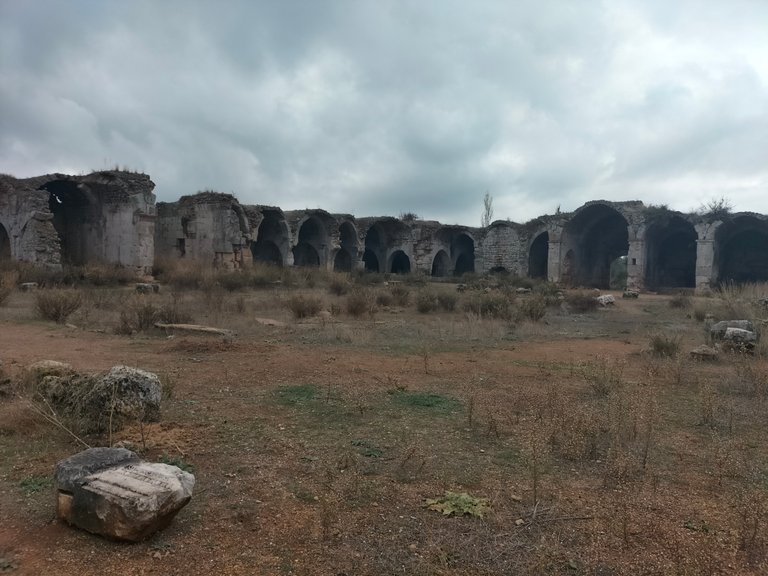
When we look at the exterior of Evdir Han, we see that most of it is in ruins. However, with its architectural structure and the inherited writings and shapes on the stones, we can understand how important and valuable this place is. The architectural shape of the structure, which has a rectangular appearance, dates back to the works of the Seljuks and Ottomans. I can say that the most solid and magnificent part of the structure is the entrance gate and the symbolic shapes on it. The entrance gate resembles the Taj Mahal, one of the most important symbolic structures of Islamic architectural works. The geometric shapes and embossed stone carvings resembling stars on this majestic gate look quite magnificent. The shapes and symbols of the walls on both sides also reveal the visual beauty of the gate.





When we enter through the door, we see an open courtyard in a large, earthen area. Immediately to the right of the entrance, on a section of the wall that remains intact, there are arches lined up one after the other, covered with vaults and open at the front. Some of these arches have collapsed and are in pieces. When we examine their protected walls, most of them are made of cut stones. We see that only some of the rubble stones covering the arches are intact. The covered areas of the covered arches at the entrance were probably used as the administrative room and equipment room of Evdir Han.






is home There is no need to pay any fee to visit the Inn. The Inn, which is open 24/7, is currently idle, neglected and unkempt. As far as I have learned, some joint work has been initiated with the contributions of the Municipality and the University so that the Inn can host cultural events. Even our artists support this joint work, and university students studying in the archaeology department show great interest. We have had artists shoot videos about it. Right now, the grass and flowers on the ground in the courtyard seem to be the sole owners of Evdir Inn.



![] ( )
)


Han's The courtyard is about ten meters long and we see two rows of open and closed arched structures that remain standing, surrounding the courtyard. The arched structures on the east and west sides are partially standing, most of the structures on the north side have collapsed. The main body of the Han is the south side where the portal is. When we enter the arched structures, the decorations reminiscent of seashells attract attention. The arched structures standing side by side connect the rectangular structure to each other.



![] ( )
)


The Han, which is integrated with the vegetation and the grass in the courtyard, seems to have been abandoned to its fate here. You can see that the grass is even surrounded by the vaulted stones. As we walk inside the dusty earth structure, we see that there are relief shapes and writings covering the arches. In this and similar inns built during the Anatolian Seljuks, most of the needs of the guests coming from the road were met. Inside the inn is a dormitory , soup kitchens and mosques. These inns were built for caravanserais traveling on major trade routes. The convoys staying in such inns would exhibit and sell the goods they brought with them.







People also use the Han, which is of great importance in terms of Antalya's historical and natural cultural values, as an outdoor attraction. Even When I came here, we even came across a video clip that was going to be broadcast on a local TV. Newly married couples come here for outdoor shooting. The Han, which is partially closed on three sides with doors, arches and walls, has one side left open, probably to let in sunlight. This architecture This feature stands out as a method widely used in Ottoman architectural structures.





Outside Han The historical ruins were left scattered around. There are inscriptions on some of the stones. When you go out from the main gate of the Inn, some flowers and herbs have come to life among the historical ruins.







These historical structures built by people in ancient times are our greatest and most valuable historical heritage. In Evdir Han, this is one of our values. Until we meet again, stay with love.
TR
Merhaba Gezginciler,
Bazen antik kentleri gezerken, o güzelim eski sütunlara dokunurken ya da geçiş yolu oluşturan basamaklı taşlara basarken, kutsal bir gücün beni izlediği endişesine kapılıyorum. Belki de milyonlarca yıl öncesinde oralarda yaşamış olan insanların ruhlarının ürpertisini yaşıyorum. Geçen hafta sonu gittiğim, Evdir Han'ın içinde yürürken aynı duyguları tekrar yaşadım.



Antalya'yı o kadar çok seviyorumki; tarihi doğası ve kültürel zenginlikleriyle, attığım her adımımda karşıma hazineler çıkarabiliyor. Antalya'nın Döşemealtı ilçesinde yer alan ve merkeze yaklaşık yarım saat uzaklıktaki, Evdir Han da bu hazinelerin başında geliyor. Bölgedeki Yeşilbayır köyü yakınlarında konumlandırılan bu tarihi eser, Anadolu Selçukluları zamanında inşa edilmiş. Ben tarihi yapıları gezerken, yerinde bulunan eserlerin dokusunu, desenlerini incelerken, kendimi sanki o döneme ışıklanmış bir tarihçi gibi de hissediyorum.




Evdir Han'ın dışardan görüntüsüne baktığımızda, büyük bir kısmının harap olduğunu görüyoruz. Ama mimari yapısı ve taşların üzerlerindeki kalıtsal yazılar ve şekillerle buranın ne kadar önemli ve değerli bir yer olduğunu anlayabiliyoruz. Genel görünümü dikdörtgen şeklinde olan yapının mimari şekli, Selçukluların ve Osmanlıların eserlerine uzanıyor. Yapının en sağlam ve en ihtişamlı yeri bence giriş kapısı ve kapının üstündeki sembolojik şekiller olduğunu söyleyebilirim. Giriş kapısı, İslam mimari eserlerin en önemli sembolik yapılarından biri olan Tac Mahali andırmaktadır. Bu heybetli kapının üstünde geometrik şekiller ve yıldızları anımsatan kabartmalı taş işlemeleri oldukça ihtişamlı görünüyor. İki tarafındaki duvarların şekilleri ve sembolleri de kapının görsel güzelliğini ifşa ediyor.


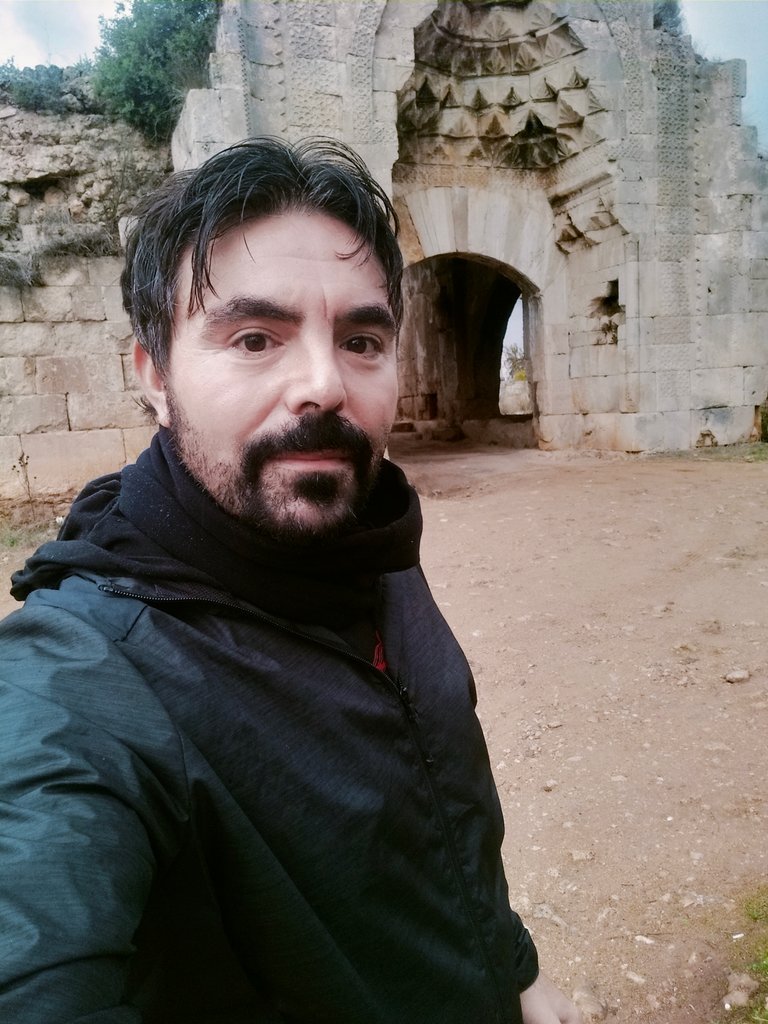


Kapıdan içeri girdiğimizde, geniş topraklı bir alanda açık bir avlu olduğunu görüyoruz. Girişin hemen sağıda, duvarın sağlam kalan bir bölümünde birbiri ardına sıralanmış, üstü tonozla örtülü önü açık olan kemerler bulunuyor. Bu kemerlerden bazılarının üstü yıkılmış ve parçalanmış durumundadır. Korumalı duvarlarını incelediğimizde, çoğu kesme taşlardan yapılmış. Kemerlerin üstünü örten moloz taşlardan sadece bazılarının sağlam olduğunu görüyoruz. Hemen girişteki üstü kapalı kemerlerin kapalı alanları muhtemelen Evdir Han'ın idari odası ve malzeme odası olarak kullanılıyordu.






Evdir Han'ı gezmek için her hangi bir ücret ödemenize gerk yok. Günün her saati açık olan Han, şu anda atıl, bakımsız ve dağınık bir görünümdedir. Öğrendiğime göre, Belediyenin ve Üniversitenin katkılarıyla, Han'ın kültürel etkinliklere ev sahipliği yapabilmesi için bazı ortak çalışmalar başlatılmış. Hatta sanatçılarımızın bile destek olduğu bu ortak çalışmaya arkeloji bölümünde okuyan üniversite öğrencileri büyük ilgi gösteriyor. Bununla ilgiliurada klip çeken sanatçılarımız olmuştur. Şu anda avludaki toprağın üstündeki otlar ve çiçekler Evdir Han'ın tek sahipleri gibi duruyor.






Han'ın avlusu yaklaşık on metre uzunluğunda olup, ayakta kalan iki sıra üstü açık ve kapalı kemerli yapıların avlunun etrafını sardığını görüyoruz. Doğu ve Batı kısmındaki kemerli yapılar kısmen ayakta kalmış, kuzey tarafında yapıların çoğu yıkılmış durumdadır. Han'ın ana gövdesi, taçkapısının olduğu güney cephesidir. Kemerli yapıların içine girdiğimizde, deniz kabuğunu anımsatan süslemeler dikkat çekiyor. Yan yana duran kemerli yapılar, dikdörtgen şeklindeki yapıyı birbirine bağlıyor.





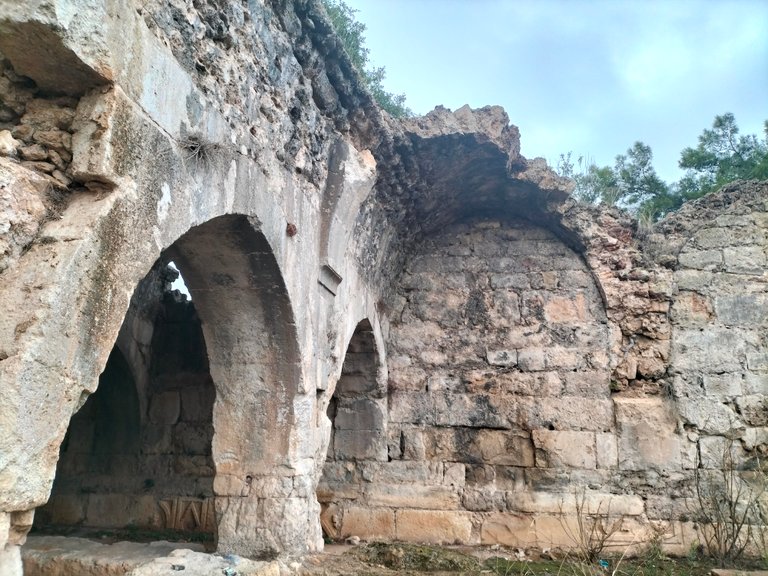
Bitki örtüleri ve avludaki, otlarla bütünleşmiş olan Han, burada kaderine terk edilmiş gibi görünüyor. Otların tonozlu taşların üstünde bile çevrelenmiş olduğunu görebilirsiniz. Tozlu topraklı yapının içinde yürürken, kemerlerin üstünü kaplayan kabartmalı şekiller ve yazılar olduğunu görüyoruz. Anadolu Selçuklular, zamanında yapılan bu ve buna benzer Han'larda, yoldan gelen misafirlerin çoğu ihtiyaçları karşılanırmış. Han'ın içinde yatakhane, aşhane ve mescit gibi birimlerde bulunuyor. Bu Han'lar büyük ticaret yolları üzerinde, yolculuk yapan kervan kafileler için yapılmış. Böyle Hanlarda kalan kafileler, yanında getirdikleri malları da buralarda sergileyerek satarlarmış.







Antalya'nın tarihi ve doğal kültürel değerleri açısından büyük önem arz eden Han'ı insanlar dış çekim olarak da kullanıyor. Hatta buraya geldiğimde, yerel bir televizyonda yayınlanacak olan bir klip çekimine bile rastladık. Yeni evlenen çiftler, dış çekim olarak buraya geliyorlar. Üç tarafı kısmı olarak kapılar, kemerler ve duvarlarla kapalı olan Han'ın bir tarafı muhtemelen güneş ışınlarının girmesi için açık bırakılmış. Bu mimari özellik Osmanlıların mimarı yapılarında da çokça kullanılan bir yöntem olarak göze çarpıyor.





Han'ın dışında da tarihi kalıntılar, dağınık halde öylece bırakılmış. Bazı taşların üzerinde kitabeler yazıyor. Han'ın ana kapısından dışarı çıktığınızda, tarihi kalıntıların arasından, bazı çiçekler ve otlar can bulmuşlar.

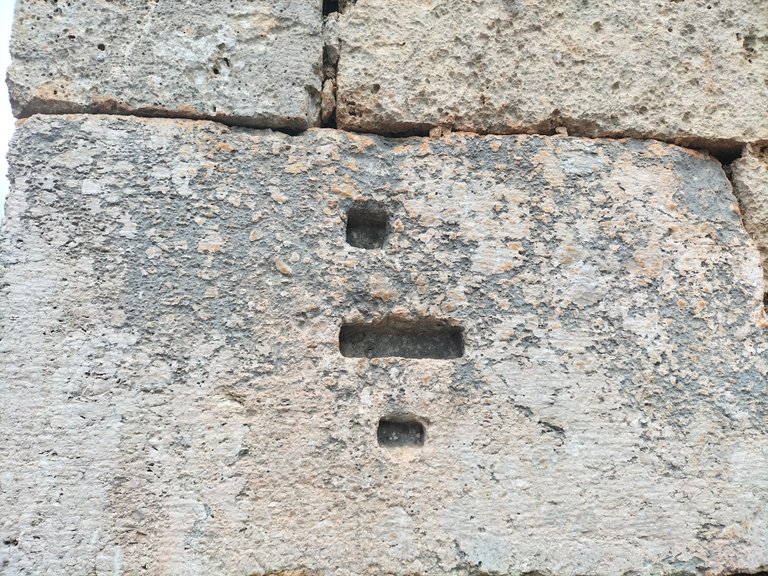

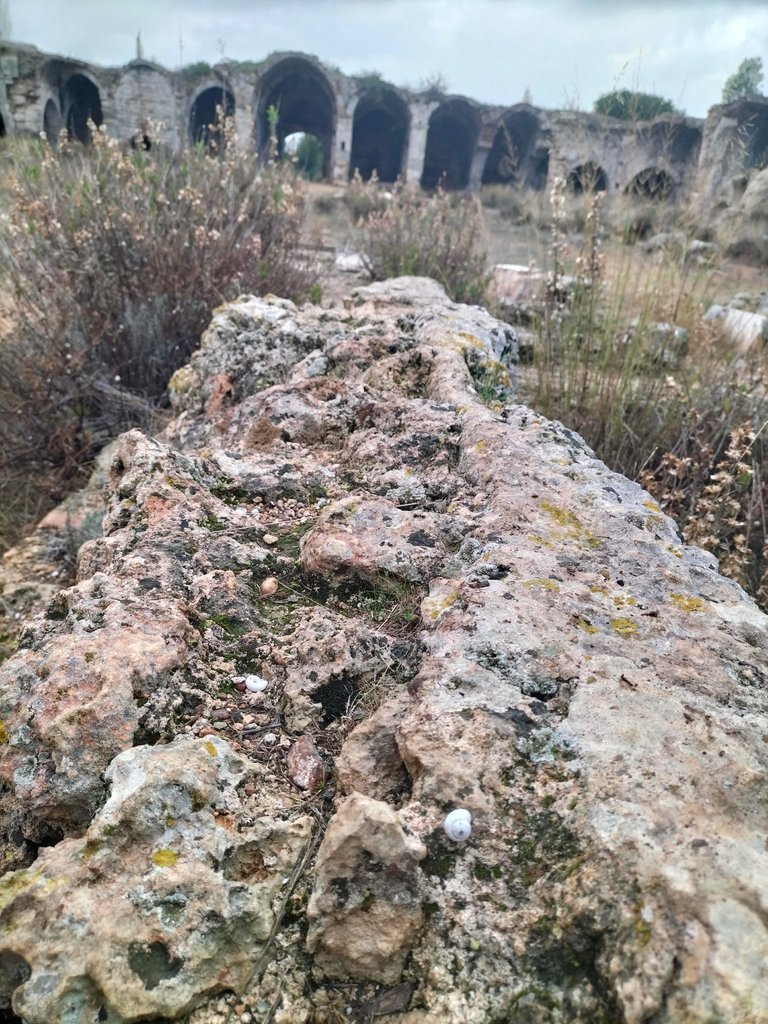



Eski çağlarda insanlar tarafından yapılmış olan bu tarihi yapılarımız, en büyük ve en değerli tarihi miraslarımızdır. Evdir Han'da bu değerlerimizden biridir. Tekrar görüşmek üzere, sevgiyle kalın.
You can check out this post and your own profile on the map. Be part of the Worldmappin Community and join our Discord Channel to get in touch with other travelers, ask questions or just be updated on our latest features.
Hiya, @lizanomadsoul here, just swinging by to let you know that this post made it into our Top 3 in Travel Digest #2411.
Your post has been manually curated by the @worldmappin team. If you like what we're doing, please drop by to check out all the rest of today's great posts and consider supporting other authors like yourself and us so we can keep the project going!
Become part of our travel community: